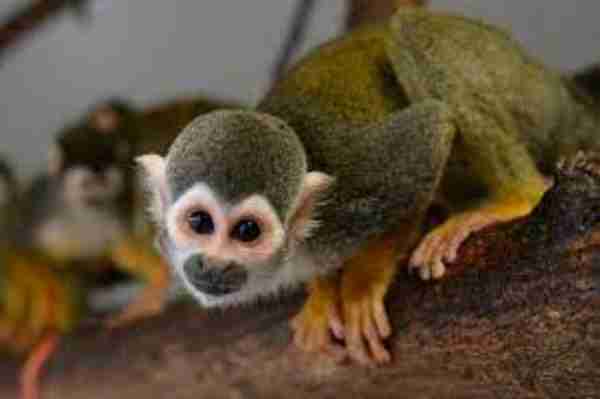Coconuts have a fascinating history when it comes to their consumption by animals. Aside from humans and monkeys who are known to enjoy tropical fruit, there are numerous other creatures that have found ways to access its nutrients. From gorillas and elephants to sun bears, fruit bats, coconut crabs, and more, herbivores and omnivores alike have discovered the benefits of this nutritious food.
Table of Contents
With its hard husk, it may seem difficult for animals to access the meat and water inside. However, they have developed creative solutions, such as using tools or cracking the shell with their powerful jaws. It’s amazing to see how adaptable animals are when it comes to nourishing themselves in the wild, and the coconut is just one example of the many foods they’ve learned to include in their diet.
10 Animals That Eat Coconuts
Monkeys

Scientific Name: Simiiformes Catarrhini
Type of Animal: Mammal
Diet: Omnivore
Monkeys exhibit a strong preference for various fruits such as bananas, mangoes, berries, and figs. While they typically opt for softer and easily accessible produce, some monkeys have also displayed an interest in coconuts.
In Southeast Asian regions like Malaysia and Thailand, monkeys are known to enjoy coconuts as a refreshing treat. Due to their adept climbing abilities, retrieving coconuts from the tops of trees poses no challenge for them.
In the wild, monkeys have developed techniques to access the coconut meat. They often tap the coconut to create a small opening, allowing them to quench their thirst and access the delicious contents inside. To crack open the coconut, they employ various methods, such as utilizing heavy stones found in their surroundings, which they wield as tools.
Coconut meat serves as a healthy and delightful snack, containing significant amounts of manganese and copper. Manganese aids in sugar regulation, while copper plays a role in the formation of red blood cells within the body.
It is worth noting, however, that not all monkeys share the same enthusiasm for consuming coconuts.
Related Article: Top 5 Most Dangerous Monkeys in the World (Pictures Included)
Gorillas
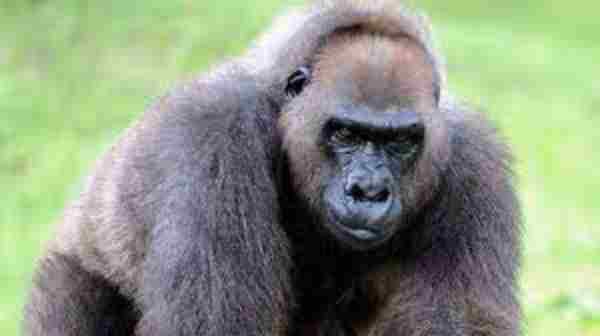
Scientific Name: Gorilla
Type of Animal: Mammal
Diet: Herbivore
Gorillas, another primate species, derive pleasure from indulging in the succulent meat of coconuts. With their large, muscular, and robust physique, gorillas may appear as apex predators, but their true nature reveals them to be herbivores.
Gorillas primarily subsist on a diet of bamboo shoots and fruits, with the exception of the occasional inclusion of termites and ants. Despite their predominantly vegetarian eating habits, gorillas exhibit a fondness for coconuts, be they young or mature. This preference is logical considering that gorillas do not drink water directly.
Instead, these remarkable primates derive their essential moisture from the vegetation they consume. They consume copious amounts of fruits and leafy greens to satisfy their thirst. In addition to relishing coconut-flavoured water, gorillas also consume the meat of coconuts.
With their immensely powerful arms, gorillas possess the strength to break through various objects effortlessly. Cracking open a coconut is no challenge for them, even without the aid of tools. Alternatively, they can employ stones with sharp edges to create a hole in the coconut.
All in all, gorillas have an uncomplicated time enjoying the benefits of both coconut meat and liquid.
Related Article: Are Gorillas Friendly? Are Gorillas Fond of Humans?
Aye-aye
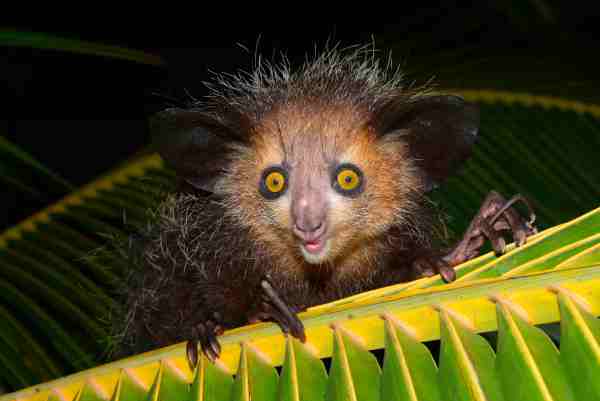
Scientific Name: Daubentonia Madagascariensis
Type of Animal: Mammal
Diet: Omnivore
A remarkable nocturnal primate hailing from Madagascar holds a profound adoration for coconuts. This unique creature has earned the moniker “half-bat, half-monkey” due to its distinctive appearance and behaviors.
As an omnivore, this primate predominantly dines on insects and grubs found in trees. However, despite their affinity for insects, the aye-aye also displays a craving for seeds, fungi, and fruits.
Interestingly, the aye-aye possesses a distinct method for accessing the delectable contents of a coconut. Unlike other primates that rely on sheer force or tools, the aye-aye utilizes its sharp incisors. These incisors enable the primate to effortlessly crack open coconuts, as well as other resilient fruits and nuts. Additionally, the aye-aye’s incisors serve another purpose: gnawing on tree barks.
By gnawing on tree barks, the aye-aye unveils hidden grubs and larvae that reside within. What adds to the intrigue is that the aye-aye’s incisors have a unique feature—they continue to grow. This constant growth ensures that the incisors do not wear down entirely, and the primate’s body adapts accordingly to accommodate this ongoing process.
It appears that the aye-aye’s teeth will continue to grow indefinitely, signifying a fascinating adaptation within this primate species.
Elephants

Scientific Name: Loxodonta
Type of Animal: Mammal
Diet: Herbivore
Elephants, known as the largest herbivores, have a diverse range of plant species in their diet. Their massive size enables them to consume up to 300 pounds of vegetation.
When it comes to their diet, these majestic creatures primarily feed on hay, grass, and legumes. With their robust trunks, elephants possess the capability to break and consume tree materials, including branches from tea plants.
However, the culinary preferences of these magnificent mammals extend beyond greenery and trees. They also exhibit an appetite for crops such as fruits and vegetables. Among their selection of dietary options, coconuts rank high on the list. Elephants employ their body weight and strength to crack open coconuts.
To initiate the process, elephants place the coconut on muddy ground to prevent it from immediately shattering. They then proceed to step on the coconut, softening its hard shell. After a few stomps, these gentle giants resort to using their powerful jaws to bite into the coconut and access its delectable contents.
Related Article: Elephants Are Predators or Prey? Unravelling Their Ecological Role
Sun Bears

Scientific Name: Helarctos Malayanus
Type of Animal: Mammal
Diet: Omnivore
The sun bear, recognized as the smallest in its species, boasts an average height of 70 centimeters and weighs between 55 to 143 pounds. Residing primarily in the tropical forests of Southeast Asia, this diminutive creature’s dietary preferences align with its habitat, particularly its fondness for fruits.
As an omnivore, the sun bear’s diet encompasses both plant matter and meat. While the bear predominantly seeks out small rodents, termites, and insects during its hunting expeditions, it also indulges in the occasional sweet treat. Fruits and the contents of honey hives are among its delectable finds.
Leveraging its sharp claws, the sun bear skillfully splits open beehives to access the honey within, savoring the sweetness with its long tongue. Additionally, this resourceful creature utilizes its sharp claws and teeth to rip open coconuts.
After creating a hole in the coconut, the sun bear delights in sipping the refreshing coconut water. Once the juice has been thoroughly enjoyed, the bear proceeds to crack open the coconut to relish the meat within.
Rhinoceros Beetles

Scientific Name: Dynastinae
Type of Animal: Insect
Diet: Herbivore
The rhinoceros beetle, also known as the coconut rhinoceros beetle or coconut palm rhinoceros beetle, may not be the first creature that comes to mind when thinking of coconut consumption. Surprisingly, this insect has gained notoriety for its affinity for devouring the fruit itself.
Growing up to 15 centimetres in length, nearly the size of a coconut, the rhinoceros beetle’s diet extends beyond coconuts. Alongside their coconut feast, they also indulge in leaf litter, plants, logs, nectar, and sap.
Regrettably, the rhinoceros beetle is considered a pest due to its destructive impact on coconut and palm crops. Their presence disrupts the growth of these plants, posing a significant threat to their well-being.
While the beetle indeed displays an appetite for fruits, its primary interest seems to lie in consuming the sap of the coconut tree. Scaling to the top of the tree, the rhinoceros beetle feeds on the plant’s vital fluid.
Unfortunately, this feeding behaviour damages the tree’s growing tissue, leading to detrimental consequences. It is not just the adult beetles that infest coconut trees, but their larvae as well, exacerbating the challenges faced by these valuable plants.
Coconut Crabs

Scientific Name: Birgus Latro
Type of Animal: Crustacean
Diet: Omnivore
True to its name, the coconut crab possesses an insatiable appetite for coconuts. This colossal decapod, also known as the palm thief, reigns as the largest land-dwelling arthropod.
When it comes to sustenance, coconut crabs indulge in fallen fruits, seeds, and nuts. Interestingly, despite their coconut-centric reputation, these crabs are not exclusively herbivorous.
Coconut crabs display predatory behavior towards rats and, surprisingly, even migratory birds. They cunningly seize their prey, often lurking in the cover of the night to catch unsuspecting victims.
While locals residing near coconut crab habitats may feel uneasy around these three-foot giants, instances of coconut crabs attacking humans are rare and usually occur as acts of self-defense.
Ultimately, the primary focus of coconut crabs lies in feasting on delectable coconut meat. Their diet predominantly revolves around the soft, white flesh within the coconut. To access their desired delicacy, they employ their formidable pincers.
Equipped with serrated edges that function as teeth, their pincers possess remarkable gripping strength. With an astonishing force of up to 742 pound-force, coconut crabs can effortlessly crack open a coconut, and caution should be exercised to avoid any mishaps when handling these powerful crustaceans.
Humans
Scientific Name: Homo Sapiens
Type of Animal: Mammal
Diet: Omnivore
The human population encompasses a wide range of dietary preferences. While some embrace a diverse omnivorous diet, others opt for vegetarian or plant-based lifestyles. However, there is one common thread that unites us all: our shared appreciation for the flavors of various fruits.
Our culinary choices are often influenced by our surroundings and the climate in which we reside. For instance, individuals in Alaska savor local delicacies like reindeer sausage and king crab legs, abundant in their region’s icy waters.
On the other hand, those inhabiting tropical regions are blessed with a bountiful array of vegetation. Fruits, vegetables, and grains flourish in these fertile lands, providing a rich tapestry of flavors and nourishment. Among the emblematic fruits synonymous with tropical locales, the coconut reigns supreme.
Coconuts come in various forms, with distinct varieties such as the Fiji dwarf coconut and the Maypan coconut. Humans delight in consuming both the refreshing coconut water and the savory coconut meat. Additionally, ingenious methods have been developed to preserve coconuts, facilitating mass production and distribution.
The significance of coconuts extends beyond their consumption. The versatile husks find purpose in crafting essential materials such as rope and brushes, adding to the sustainability and usefulness of this remarkable fruit.
In our quest for sustenance and resourcefulness, we have truly embraced the wonders of the coconut, exemplifying the harmonious relationship between humans and the natural world.
Fruit Bats
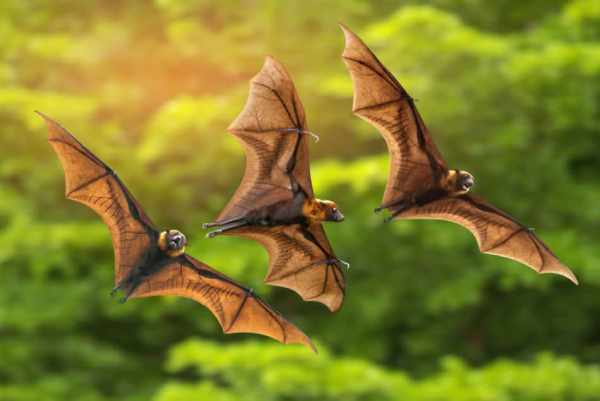
Scientific Name: Pteropodidae
Type of Animal: Mammal
Diet: Frugivore
Scientifically known as Pteropodidae, fruit bats are a remarkable species of bats found in tropical regions. They possess unique characteristics that set them apart from their bat counterparts, resembling small canines in appearance.
Contrary to their predator-like appearance, fruit bats have a predominantly frugivorous diet, consisting of fruits, berries, and leaves. These adept flyers skillfully pluck fruits from trees and carry them back to their roosts.
Among the vast array of fruits available, fruit bats exhibit a particular affinity for mangoes, wild dates, and bananas. However, their curiosity extends to coconuts as well.
Interestingly, fruit bats display a greater inclination towards sampling the nectar-rich coconut flowers. These mammals are known for their preference for flowers and nectar, akin to their avian counterparts.
With this dietary preference, fruit bats play a crucial role as pollinators, much like bees. It explains their attraction to flowers rather than solely focusing on fruit consumption.
While fruit bats primarily feed on fruits, the coconut fruit poses a unique dilemma for them. Due to their limited strength, they are unable to open coconuts. As a result, they opt to stick to their successful strategy of relishing the coconut flowers instead.
These intriguing flying mammals showcase a diverse palate, emphasizing their importance in the ecological balance of tropical ecosystems.
Related Article: Are Bats Smart? Complete Guide to Understanding Bat Smarts
Rats
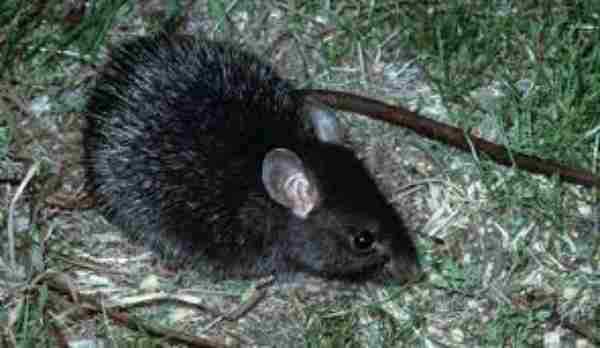
Scientific Name: Rattus
Type of Animal: Mammal
Diet: Omnivore
The final contenders on our list of coconut enthusiasts are none other than rats. Often regarded as pests across various regions, these rodents are notorious for damaging crops and rummaging through our waste.
Rats are commonly associated with uncleanliness, carrying bacteria and viruses. Being omnivores, they possess a versatile palate, ranging from fruits to insects.
It should come as no surprise, then, that rats are capable of consuming coconuts. Take, for instance, Polynesian rats, which employ their resourcefulness to create openings in coconuts, granting them access to the nutritious contents within.
Despite their modest size and limited strength, these rodents rely on their small, nibble-like teeth to carve through the tough shell. In the atoll of Tokelau, rats primarily subsist on a coconut-based diet.
In 2010, a fascinating discovery was made in the Solomon Islands—the Vangunu giant rat. This colossal rodent possesses the remarkable ability to crack open coconuts using its formidable teeth.
Unlike its nibbling counterparts, the Vangunu rat possesses the strength to forcefully break through the coconut’s outer shell. It takes great pleasure to devour the delectable coconut meat and savor the refreshing coconut water within.
Reference:
- https://www.cs.mcgill.ca/~rwest/wikispeedia/wpcd/wp/c/Coconut_crab.htm
- https://homework.study.com/explanation/do-monkeys-eat-coconuts.html
- https://www.aphis.usda.gov/aphis/resources/pests-diseases/hungry-pests/the-threat/coconut-rhinoceros-beetle/hp-crp

Jeevan Kodiyan
An animal enthusiast with an interest in zoology, studying the behavior and activities of animals in the wild habitat. I work on research projects related to species conservation and endangered species protection. I also leverage zoology to become an educator, educating others about the importance of protecting our natural environment and the beauty of animals in their natural habitats.

